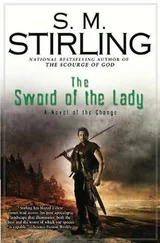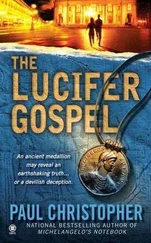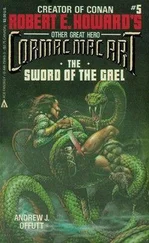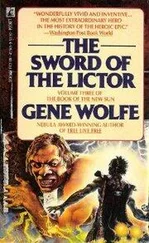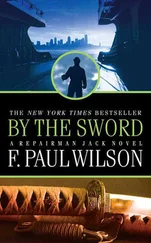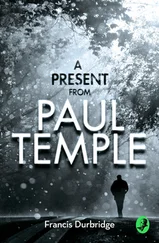Paul Christopher - The Sword of the Templars
Здесь есть возможность читать онлайн «Paul Christopher - The Sword of the Templars» весь текст электронной книги совершенно бесплатно (целиком полную версию без сокращений). В некоторых случаях можно слушать аудио, скачать через торрент в формате fb2 и присутствует краткое содержание. Жанр: Триллер, на английском языке. Описание произведения, (предисловие) а так же отзывы посетителей доступны на портале библиотеки ЛибКат.
- Название:The Sword of the Templars
- Автор:
- Жанр:
- Год:неизвестен
- ISBN:нет данных
- Рейтинг книги:3 / 5. Голосов: 1
-
Избранное:Добавить в избранное
- Отзывы:
-
Ваша оценка:
- 60
- 1
- 2
- 3
- 4
- 5
The Sword of the Templars: краткое содержание, описание и аннотация
Предлагаем к чтению аннотацию, описание, краткое содержание или предисловие (зависит от того, что написал сам автор книги «The Sword of the Templars»). Если вы не нашли необходимую информацию о книге — напишите в комментариях, мы постараемся отыскать её.
The Sword of the Templars — читать онлайн бесплатно полную книгу (весь текст) целиком
Ниже представлен текст книги, разбитый по страницам. Система сохранения места последней прочитанной страницы, позволяет с удобством читать онлайн бесплатно книгу «The Sword of the Templars», без необходимости каждый раз заново искать на чём Вы остановились. Поставьте закладку, и сможете в любой момент перейти на страницу, на которой закончили чтение.
Интервал:
Закладка:
The rest of the courtyard was rubble weeds and tall grass. No evidence of guards or even casual visitors. No litter, no cigarette butts or pop cans on the ground. Kellerman ran a tight ship. Holliday took a deep breath, let it out slowly, and then sprinted across the courtyard, not pausing until he’d reached the shadowed safety of the keep’s gatehouse. He waited, watching as Peggy followed, cloth bag over her shoulder, long legs pumping, bringing her across the courtyard a few seconds later.
“Okay,” she said. “Now what?”
Holliday glanced upward. He could see the pattern of holes drilled in the stone roof of the gateway. “Murder holes” used for pouring boiling oil down on the besieging enemy.
Beyond that was the narrow earth bridge that crossed the moat. In centuries past the bridge would have been wood and the moat would have been filled with water or sharp stakes, the medieval version of tank traps meant to slow the work of approaching siege engines or sappers intent on undermining the walls.
Holliday suddenly found himself wondering who had been here before him. Places like this were history. They were steeped in it, bathed in its blood, and eventually ruined and forgotten by it. What armored knights on horseback had come through this gateway, what princes and what kings?
“Having a history moment, are we?” Peggy said, grinning at him in the gloom.
“Oh, shut up,” he said fondly, grinning back. “You know me too well. Come on.”
They ran across the narrow earth bridge, the moat no more than a shallow curving ditch on either side of them, thick with grass and weeds. They reached the arched entrance to the keep and stepped inside. Castles had their individual characteristics, but their architecture was as predictable as Big Macs from Nashville to Novgorod. He’d taken a class of seniors to Russia on a goodwill tour the summer before and he’d actually eaten a burger in Novgorod, so he knew what he was talking about.
Inevitably the keep would have had five levels rising from ground level. Stores, an administrative level, the keep’s version of the Great Hall, a residential level, and an armorers’ level. Above that would be the tile-covered wooden roof and an open fighting platform for archers. There would be garderobes-medieval toilets-jutting out at every level and emptying down into the moat.
Below ground level were the cells used for prisoners and below that the keep’s well and the cistern used for filling the moat and as a catchment for rain, giving the keep a secondary supply of water for cooking and cleaning. All in all a very effective and self-contained environment for a castle under siege, its curtain wall already breached. All of this would have been connected by a series of stone stairways built between the inner and outer walls of the keep. If Drabeck had been telling them the truth, their destination would be one of those old stairways that led down to the dungeons and the water supply.
Holliday peered into the gloom. There was the darker shadow of a doorway on the right. He pointed.
“There.” He touched Peggy’s elbow, and they pelted across the open paving stones that had once been the foundation of the keep. They reached the doorway. Inside the small arch and to the left there was a narrow stone stairway leading downward. The steps were worn by centuries of use. Few princes and even fewer kings had used these steps. This was a stairway for servants and jailers.
Holliday took a small Maglite from the pocket of his jacket. He went down two steps and turned it on. The steps were no more than a foot wide and very steep.
“Careful,” he said, looking back over his shoulder. “Take it slow.”
He went down the steps, holding the light high, the palm of his free hand against the stone wall for balance as he descended. Peggy followed cautiously. At the bottom of the steps there was a small vaulted vestibule and a formidable iron door. The door had four immense strap hinges on the left, secured with thumb-sized rivets, and an old-fashioned ward lock on the right with a latch above it. Peggy tried the door.
“Locked.”
“Nobody carries a key that big around with them,” said Holliday. He swept the beam of light around the small area. There was nothing. No potted plant, no convenient rock or welcome mat, no chink in the mortar of the close-set stones.
“No key here,” said Peggy. “We’re out of luck.”
“Maybe not.”
“Explain please.”
“Benedict Arnold,” Holliday said suddenly, snapping his fingers.
“Pardon?”
Holliday stepped forward, using the Maglite to scan the hinges. They were set apart equally on the door, each hinge a good five inches wide, each with four giant rivets securing it. Except for the middle hinge, which had five rivets. An oversight? A later repair? Maybe. Then again.
He poked each one of the rivets with the ball of his thumb. Nothing, but he felt the third rivet move slightly. Instead of pushing, he pulled. The rivet popped out an inch, and there was a satisfying clicking sound from inside the door.
“Try it now,” said Holliday. Peggy tried the latch. The door opened.
“Shazam. How’d you figure that out?”
“Benedict Arnold commanded West Point before he turned traitor. After he fled they went through his residence and found a secret panel in the attic with a lock like this one.”
“Crafty devil.”
“Let’s not stand around too long,” said Holliday. “It’s gone beyond simple trespass now.”
Peggy pulled open the door, and they stepped inside.
Holliday swung the flashlight, and the beam picked up an old-fashioned metal toggle switch screwed to the wall beside the door. He flipped it to the ON position. The room lit up.
“Holy Batcave, Doc! You weren’t kidding!”
The cistern was a curved-roof chamber fifty feet long and twenty wide with a single horseshoe archway at the midpoint. The ceiling, walls, and floor were made with rectangular blocks of limestone so closely set that there was no need for mortar. Industrial pan lights dangled down from heavy electrical flex stapled to the roof stones. Four immense ceremonial banners were hung like tapestries on the wall at the end of the room. The designs of all four were remarkably similar.
On the far left was the rune circle and sword insignia of the Ahnenerbe, the Nazi ancestral heritage organization. Beside it was the sword and ribbon symbol that Holliday had seen tattooed on the dead man’s wrist at Carr-Harris’s farm and cut into the stone above the doorway of the Schloss Kellerman. The third design showed another circle of runes containing a sword wreathed with heraldic dragons, and the fourth banner was stitched with the sword and a right-facing, curved-arm swastika of the Thule Society, the so-called Teutonic Order of the Holy Grail. All the banners were done in red, white, and black, the Nazi palette.
“This guy Kellerman has a real thing about swords, doesn’t he?” Peggy commented, staring at the garish tapestries.
“One sword in particular, I’m afraid,” said Holliday.
The rest of the cavernous chamber was filled with displays like the museum in the Schloss. A case of weaponry included a boxed, gold-plated Mauser.32-caliber presentation automatic pistol marked “Meister Schieben”-Master Shooter-with the same sword and ribbon insignia carved into the grips, as well as a battered MP18 submachine gun with a wooden stock and even a Panzerfaust, the German version of the American bazooka.
There were several uniforms on mannequins from SS General to the plain dress of a World War I Kaiserjдger infantryman with the rank of Gefreiter, or lance corporal, presumably meant to indicate Lutz Kellerman’s rise from the trenches to the Nazi General Staff.
There were pictures of Lutz Kellerman everywhere. Lutz Kellerman with Rommel in North Africa, leaning on a massive Panzer 1 tank. Lutz Kellerman with Adolf Hitler and Albert Speer during the Fьhrer’s whirlwind three-hour tour of the French capital. Lutz Kellerman in a candid shot at the Vatican with Vice-Chancellor Franz von Papen and Cardinal Eugenio Pacelli, the man who would become known as “Hitler’s Pope,” probably taken in 1933 just before or just after the signing of the Reichskonkordat between the Nazis and the Roman Catholic Church. Lutz Kellerman standing with SS-Obersturmbannfьhrer Martin Weiss, commandant of Dachau concentration camp, beneath the infamous ARBEIT MACHT FREI-“Work will give you freedom”-gateway.
Читать дальшеИнтервал:
Закладка:
Похожие книги на «The Sword of the Templars»
Представляем Вашему вниманию похожие книги на «The Sword of the Templars» списком для выбора. Мы отобрали схожую по названию и смыслу литературу в надежде предоставить читателям больше вариантов отыскать новые, интересные, ещё непрочитанные произведения.
Обсуждение, отзывы о книге «The Sword of the Templars» и просто собственные мнения читателей. Оставьте ваши комментарии, напишите, что Вы думаете о произведении, его смысле или главных героях. Укажите что конкретно понравилось, а что нет, и почему Вы так считаете.

